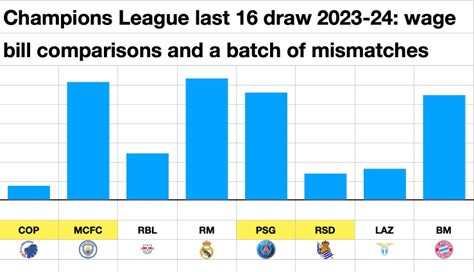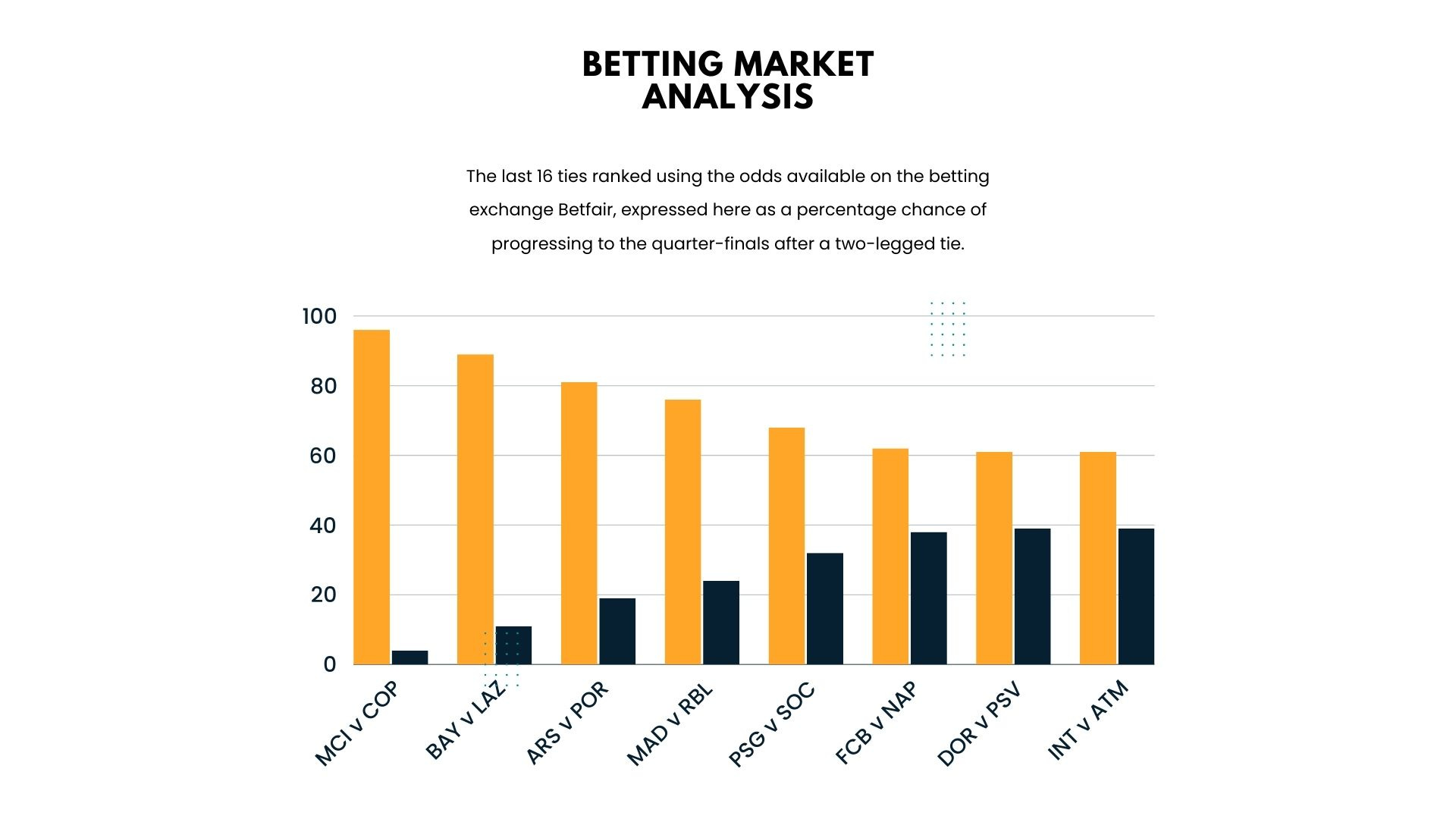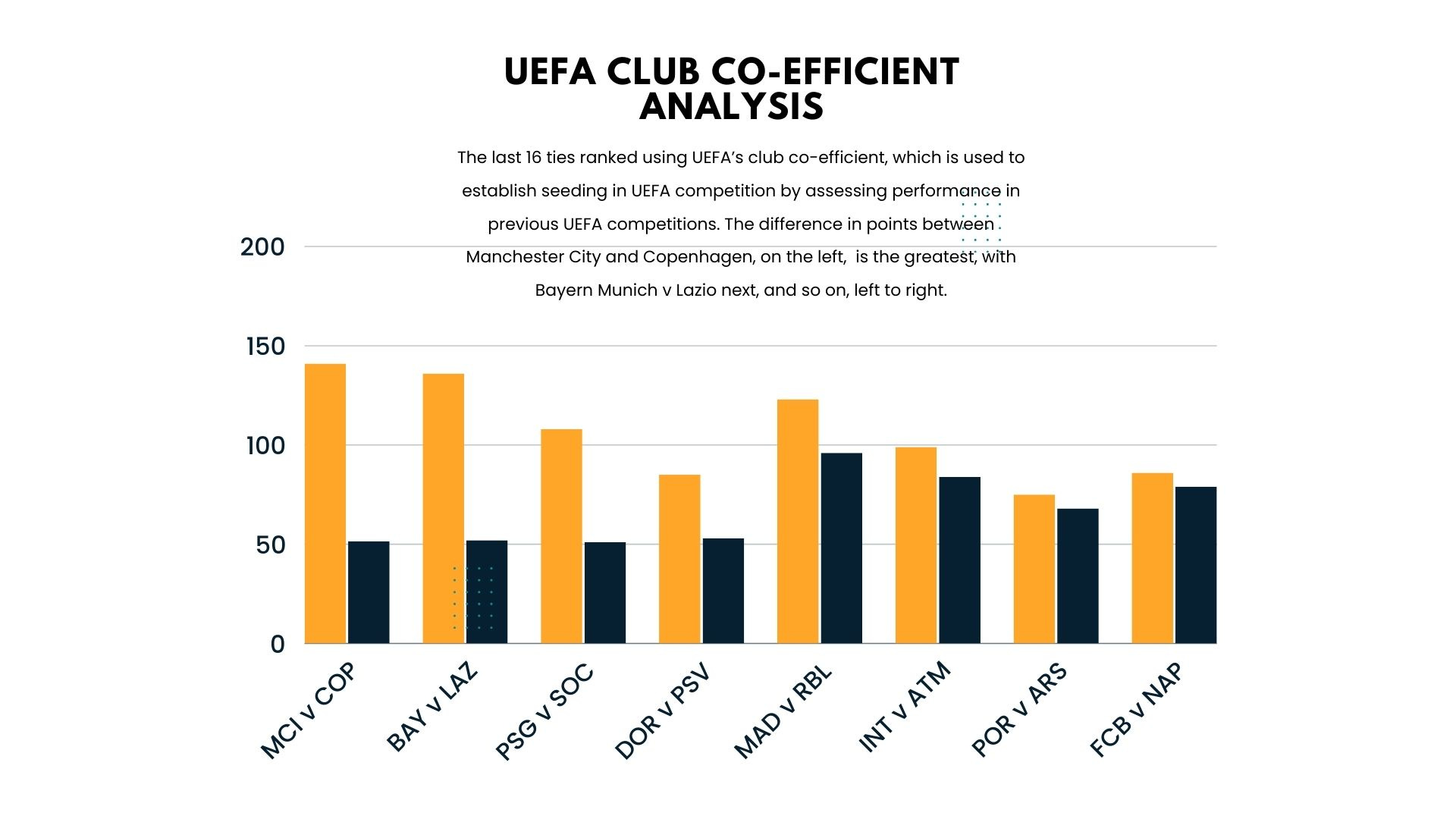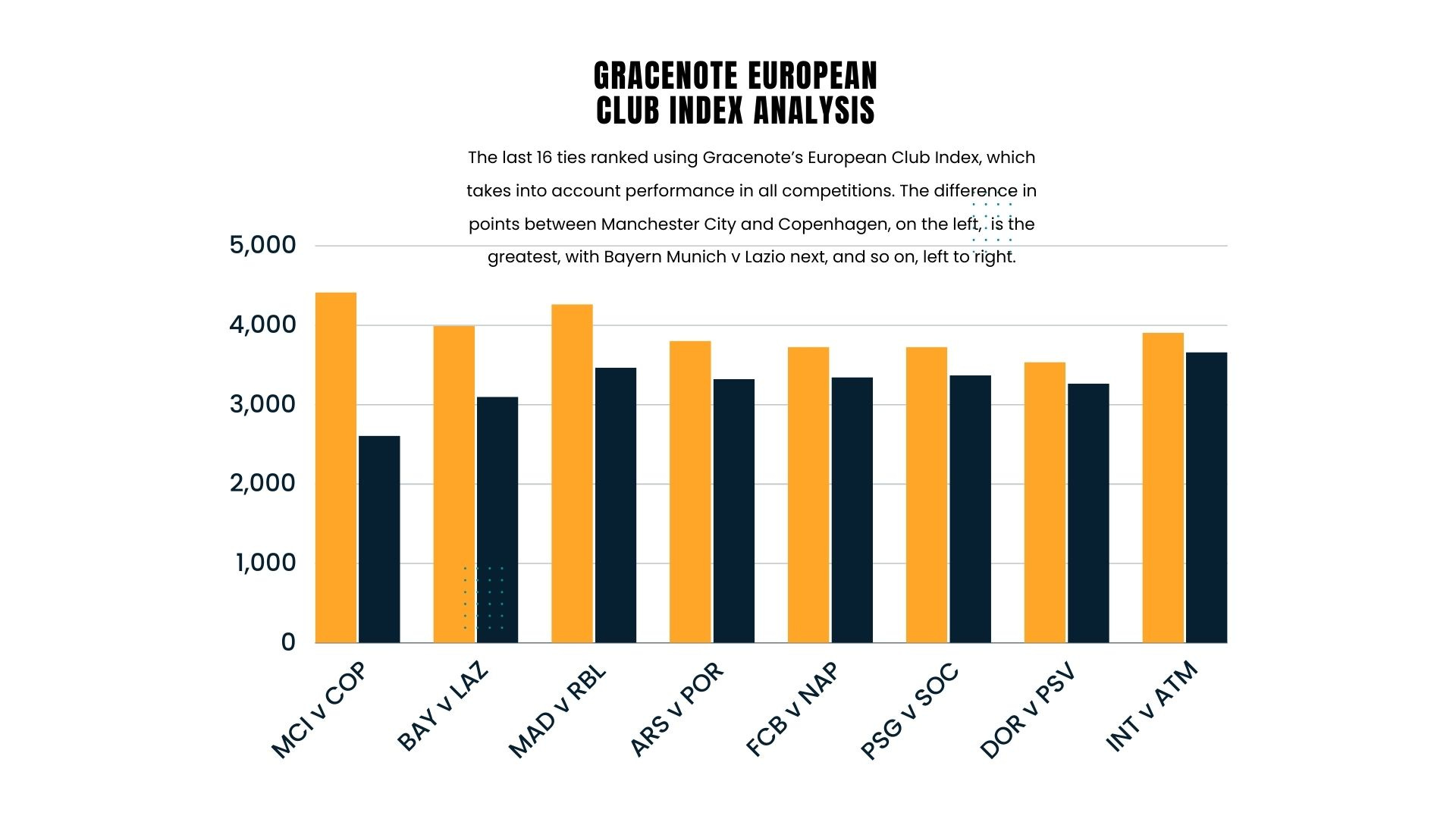The Champions League Prediction Matrix
I triangulated wage data, betting markets, UEFA's co-efficient and two independent models to see how predictable the round of 16 might be
The knockout stage of the 2023-24 Champions League gets underway this evening as four of the teams play the first legs of their last-16 ties, with Copenhagen hosting Manchester City and RB Leipzig hosting Real Madrid.
When the last-16 draw was made in December, I constructed a graphic, contrasting the wage bills for the respective clubs involved in each tie.
In elite European football, all things being equal, the more a club spends on wages, the better they will perform.
As I wrote in the third** and final part of my series ‘The Truth About Wages’, in the relaunch week of Sporting Intelligence in January:
All things being equal is doing some heaving lifting there because things are never equal. Some clubs are brilliantly run, paying smart not big, and others are woefully run, spending big not smart
** Part one was free here, and part two was free here. There will continue to be some free content every week, but for this incarnation of Sporting Intelligence to be viable in the medium and long-term, financial support from some readers is necessary and I’m really pleased that some supporters are already contributing so soon.
Anyway, back to the graphic produced in December about the relative financial power of the last 16. Here it is:
Football is largely meritocratic, so wages are a decent proxy for talent. It’s not the totals that matter in the graph, it’s the relative financial power that’s important.
On this basis it seems we have seven mismatches in the eight last-16 ties and one reasonably close contest. On wages alone we could expect the following to happen: Manchester City to qualify past Copenhagen, Real Madrid to get past Leipzig, PSG to overcome Sociedad, Bayern Munich to beat Lazio, Dortmund to down PSV, Arsenal to out-gun Porto and Barcelona to boot out Napoli, with Internazionale versus Atletico Madrid a closer-run thing.
But I wondered what other ‘predictive’ sources say, and whether there is a consensus view.
First, I looked at the betting markets, and specifically for the purposes of this exercise the odds on Betfair (a betting exchange where odds are determined by a market, as opposed to a traditional sportsbook) for each of the clubs to progress to the quarter-finals.
To simplify matters for those who don’t understand betting or odds, I’ve converted the odds into a percentage chance of progression (after two legs) for the favourites in each of the eight matches in the round of 16.
The betting markets agree with the wage data predictions in seven of the eight ties. They say that City, Bayern, Arsenal, Real Madrid, PSG, Barca and Dortmund will likely get through, but the betting markets also think Inter will beat Atletico.
I have then ranked the favourites from most likely to least likely to win, as below.
In detail, Manchester City have a 96% chance of progressing past Copenhagen. Bayern Munich have an 89% chance of success. Arsenal have an 81% chance of progressing, Real Madrid 76%, PSG 68%, Barcelona have a 62% chance of progressing past Napoli, Dortmund have a 61% chance of reaching the quarters and the betting markets give Inter a 61% chance of getting by Atletico.
Next, I looked at what UEFA’s current club coefficients suggest about the outcome of the last-16 ties. The club coefficient rankings take into account the results of each club in UEFA club competition and are used to determine a club’s seeding in club competition draws.
Using the up-to-date rankings, Manchester City are the best team in Europe and the best team in the last 16, with 141 UEFA points. Sociedad are the lowliest team remaining (51 points), just below Lazio and PSV.
The table below ranks the ties in order of mismatch, according to UEFA points. As you can see, City are most likely to go through, followed by Bayern, PSG, Dortmund and Real Madrid, then Inter. The coefficient puts Porto ahead of Arsenal and on this measure Barcelona are favoured against Napoli, but not by much.
Next I looked to the European Club Index from Gracenote, which is a Nielsen company. Gracenote, like UEFA, rank clubs depending on historic performance, except Gracenote use all games, not just UEFA fixtures. The Gracenote methodology is here, and the output for each team boils down to a number. Gracenote have City as the best team left in the CL this season (with 4,416 points) and Copenhagen as the weakest (2,609).
Here are the eight last-16 ties ranked in order of most likely progression to least likely, with the best-ranked club on the left for each tie.
This model, like the basic wage data, sees City, Bayern, Real Madrid, Arsenal, Barca, PSG and Dortmund go through, plus Inter (which is different from the wage data but the same as the betting markets and UEFA).
Last but not least, I asked the brilliant folk at Twenty First Group to ponder this problem and see if they could identify any potential shocks, using their own metrics.
Thank you to Tony Pilch and Aurel Nazmiu for producing the fascinating analysis below. Aurel considered each of the 16 teams’ chances based on two metrics: 21st Group’s own performance metric (based on their world club-comparison model), and wage data.
The graphic is self-explanatory with PSG v Sociedad being a prime example of a fixture prone to an upset based on performance, even though it’s one that would appear to be very one-sided considering financial strength (wages) alone. TFG team performance is Twenty First Group’s metric for each club’s current ranking in a global context against hundreds of other clubs.









